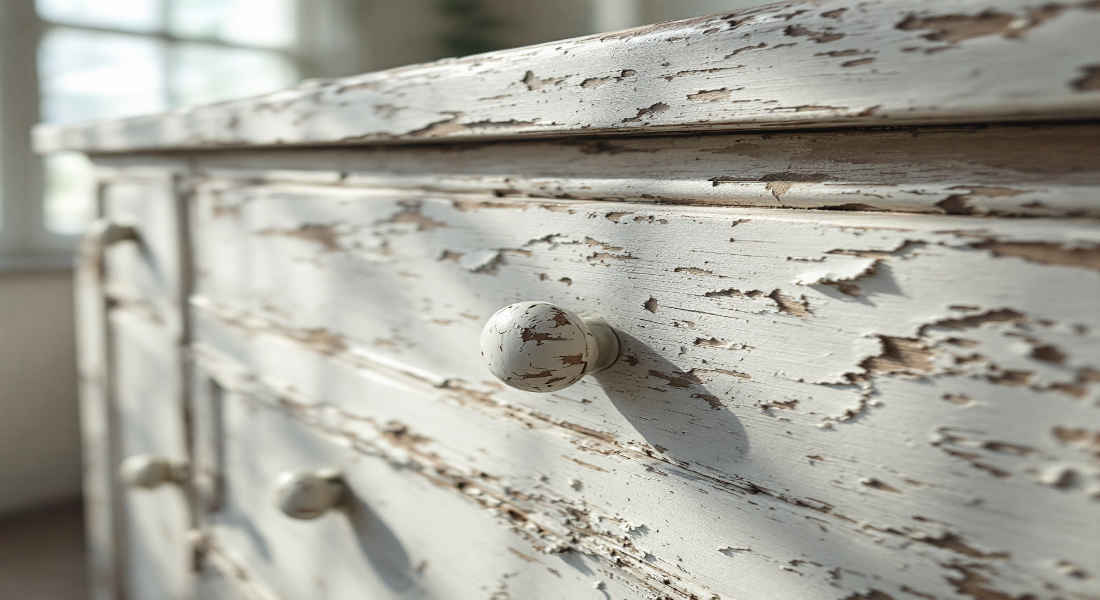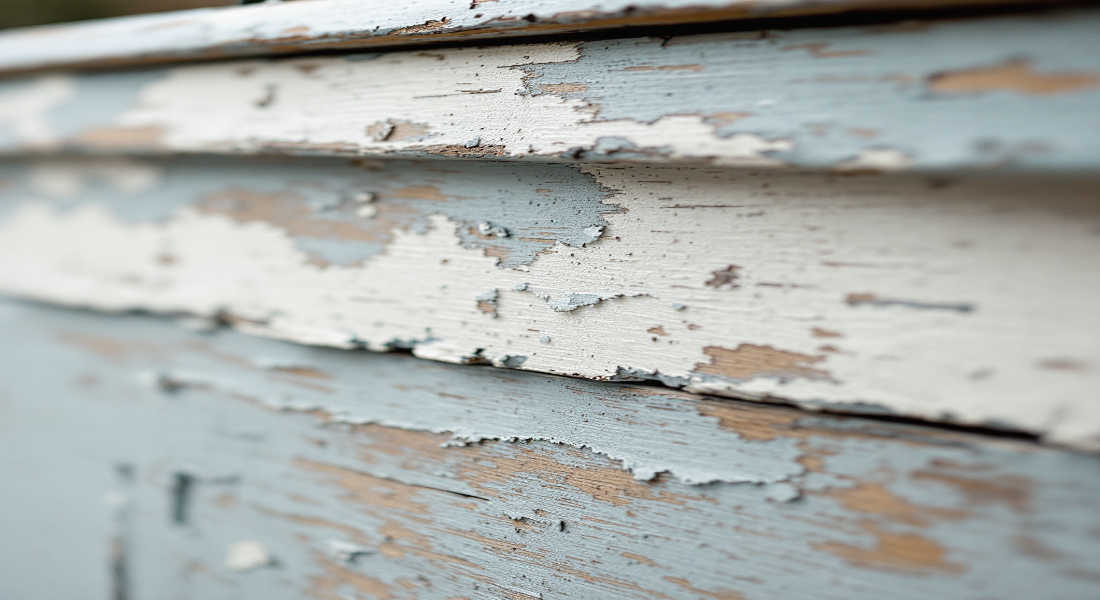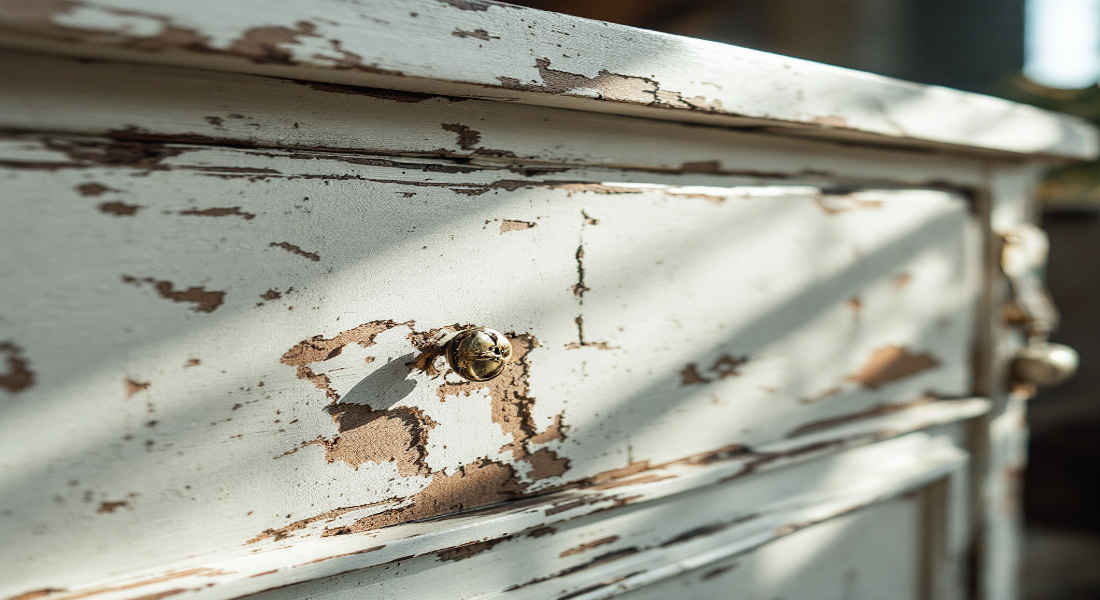Peeling paint on home furniture is a common issue that can make your once-beautiful pieces look worn out and neglected. Whether it’s an old wooden chair, a vintage dresser, or a treasured coffee table, peeling paint can ruin the aesthetic of your home. But don’t worry.
Understanding Peeling Paint on Home Furniture
Before jumping into the repair process, it’s crucial to understand what causes paint to peel and why timely intervention is necessary.
What Causes Paint to Peel on Furniture?
Peeling paint doesn’t happen overnight. It’s often the result of several factors that weaken the bond between the paint and the Surface. Here are the most common culprits:
Environmental Factors
- Humidity and Moisture: High humidity or accidental water spills can seep into painted furniture, causing the paint to lose adhesion.
- Temperature Fluctuations: Extreme changes in temperature can cause the paint to expand and contract, leading to cracks and peeling.
- Dust and Dirt: A dusty or dirty surface can prevent paint from sticking properly during application.
Poor Surface Preparation
- Not cleaning or sanding the Surface before painting can leave residue or uneven areas that compromise the paint’s hold.
- Skipping Primer is another common mistake that leads to peeling.
Improper Paint or Application
- Using the wrong type of paint (e.g., wall paint instead of furniture paint) or applying paint too thickly can lead to cracking and peeling over time.
Common Signs of Peeling Paint
- Visible cracks, bubbles, or flakes in the paint layer.
- Discolored or uneven patches on the Surface.
- Paint chipping off when lightly scratched.
Why Timely Repair Matters
Ignoring peeling paint isn’t just a cosmetic problem. Over time, the exposed surface underneath can become vulnerable to moisture, dirt, and Damage. Timely repairs prevent further deterioration and help maintain your furniture’s longevity.
Essential Tools and Materials Needed to Fix Peeling Paint
Before starting your DIY project, gather all the necessary tools and materials to ensure a smooth and hassle-free process.
You may also read (stripping home furniture).
Tools You’ll Need
- Sandpaper: Medium grit (for removing loose paint) and fine grit (for smoothing the Surface).
- Paint Scraper: To gently remove peeling paint.
- Putty Knife: For applying filler to cracks or chips.
- Lint-Free Rag: To clean the Surface and remove dust.
- Drop Cloth: To protect your workspace.
- Vacuum Cleaner: To remove sanding dust.
- Paintbrushes: For Primer and paint application.
Materials to Prepare
- Primer: Choose a high-quality primer designed for furniture.
- Semi-Gloss Paint: Durable and easy to clean, semi-gloss paint is ideal for furniture.
- Finishing Wax or Sealant: Protects the paint and adds a polished look.
- All-Purpose Cleaner: This is used to clean the furniture surface.
Safety Gear
- Gloves: To protect your hands from chemicals and paint.
- Mask: To avoid inhaling dust or paint fumes.
- Protective Eyewear: To shield your eyes while sanding or scraping.
Tips for Choosing Quality Materials
Investing in high-quality materials is key to achieving long-lasting results. Look for paints and primers specifically labeled for furniture, and avoid cheap tools that might damage your furniture during the repair process.
Step-by-Step Guide: How to Fix Peeling Paint on Home Furniture
Now that you’re equipped with the right tools and materials, it’s time to get started! Follow these steps to repair peeling paint like a pro.
Assess the Damage
- Begin by carefully inspecting your furniture to determine the extent of the peeling. Is it limited to a small area, or does the entire piece need repainting?
- Decide whether you’ll do a full repaint or a simple touch-up for localized peeling.
Prepare Your Workspace
- Lay down a drop cloth to protect your floors or surfaces.
- Ensure proper ventilation by working in a well-ventilated area or opening windows.
- Wear your safety gear to protect yourself from dust and fumes.
You may also read (home to get hot at night).
Remove Loose and Peeling Paint
- Clean the furniture with an all-purpose cleaner to remove dirt, grease, and residue.
- Use a paint scraper to gently lift and remove loose paint. Be careful not to gouge the wood underneath.
- Sand the affected area with medium-grit sandpaper to remove any remaining flakes.
- Vacuum and wipe the Surface with a lint-free rag to eliminate sanding dust.
Sand the Surface Smooth
- Switch to fine-grit sandpaper to smooth out the edges and create an even surface.
- A smooth surface ensures proper adhesion of the Primer and paint.
Repair Any Surface Imperfections
- Check for cracks, chips, or gouges. If you find any, fill them with wood filler or putty.
- Allow the filler to dry completely, then sand the area until it’s flush with the rest of the Surface.
Apply Primer
- Use a high-quality primer suited for furniture to improve paint adhesion.
- Apply a thin, even coat and let it dry completely before moving on to the next step.
Paint Your Furniture
- Choose a semi-gloss paint for a durable and attractive finish.
- Apply multiple thin coats, letting each layer dry completely before applying the next.
- Use long, even strokes to avoid brush marks and ensure a smooth finish.
Finish with Protective Wax or Sealant
- Once the paint is dry, apply a layer of finishing wax or sealant for added protection.
- Use a soft cloth to buff the wax into the Surface, giving your furniture a polished and professional look.
Common Mistakes to Avoid When Repairing Peeling Paint
To ensure a successful DIY project, steer clear of these common mistakes:
- Skipping Surface Preparation: Failing to clean or sand the furniture can cause the new paint to peel.
- Painting in Humid Conditions: Humidity can prevent paint from drying properly.
- Using the Wrong Paint or Primer: Always use products designed specifically for furniture.
- Rushing the Process: Allow adequate drying time between coats for the best results.
Tips for Preventing Peeling Paint on Furniture in the Future
Prevention is always better than cure. Here are some tips to keep your furniture looking flawless:
- Proper Cleaning and Sanding: Always clean and sand the Surface before painting.
- Use High-Quality Materials: Invest in durable paint, Primer, and finishing products.
- Control Indoor Humidity: Use dehumidifiers to maintain a stable indoor environment.
- Regular Maintenance: Inspect your furniture periodically and touch up small imperfections before they worsen.
When to Call a Professional
While most peeling paint issues can be fixed with DIY techniques, some situations may require professional help:
- If the furniture has extensive Damage or intricate details that are hard to repair.
- If your piece is an antique or highly valuable, professional restoration can preserve its value.
You may also read (how to safeguard your white furniture at home).

